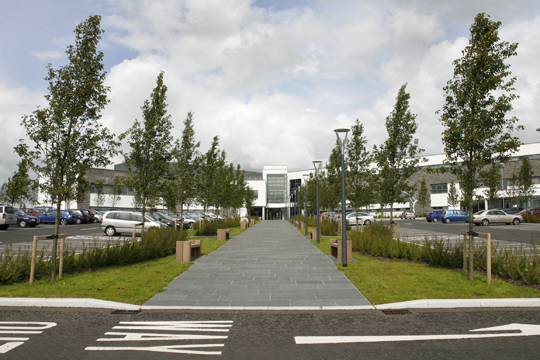The South Eastern HSC Trust has welcomed the announcement that the Downe and Lagan Valley Hospitals have been designated as new centres for day surgery, serving patients from across Northern Ireland.
From December, the Downe Hospital in Downpatrick will become one of three prototype elective care centres across the region which will perform routine day surgery for cataracts. The other centres are at Mid Ulster and South Tyrone Hospitals.

Lisburn’s Lagan Valley Hospital is to become one of two new elective care centres for treatment of varicose veins. The other prototype centre is Omagh Hospital and Primary Care Complex,
Trust Chief Executive Hugh McCaughey said: “The Trust is delighted to host these new prototype services which are expected to significantly reduce waiting times for patients.The Trust believes that both the Downe and Lagan Valley hospitals are well placed to continue to play a significant role in the further development of elective care for the local, and wider, population”.
Cataract surgery accounts for around 5% of all elective procedures in Northern Ireland, while at least a third of our population has visible varicose veins, and this prevalence rises with age. Option appraisals were carried out to determine the most suitable sites, and the performance of the prototype centres will be closely monitored and evaluated to inform the development of a model for all day case procedures.
The new centres form part of the Department of Health’s modernisation plan to transform the delivery of Elective Care services and drive down waiting times. Such centres are already in operation in other jurisdictions, and show significant benefits in terms of productivity, quality, standardisation of approach, and workforce stability.
The Department expects that by December next year, no patient requiring treatment for cataracts and varicose veins will wait more than 12 months. By December 2020, the waiting time should reduce to 26 weeks and by December 2021 to the ministerial target of 13 weeks.
The centres will be protected so that procedures won’t be cancelled because of pressures in major hospitals. While some patients may be asked to travel further for their treatment, they benefit by receiving more rapid assessment, more timely care, and better outcomes.
By December 2020, the Department of Health will transfer more than 100,000 day cases, 25,000 endoscopies and 8,000 paediatric procedures to regional Elective Care Centres. The specialties to be treated in the new regional Elective Care Centres will include general surgery (including vascular), urology, ophthalmology, ENT, gynaecology, orthopaedics and other relatively low volume specialties.
Department of Health Permanent Secretary Richard Pengelly said: “The development of elective care centres is an important step in the transformation of hospital services in Northern Ireland.
“The current waiting times for hospital surgery are totally unacceptable, and elective care centres are central to our plans to eradicate this scourge on our service.
“Delivering services on fewer hospital sites will increase the capacity of the health system and allow us to deliver more procedures. While this will be an important step forward, I would emphasise that additional investment is still needed to clear the significant backlog of patients who are waiting for an operation.
“Some patients may have to travel a bit further for their day surgery. But the clear trade off will be a significant reduction in the time spent waiting for that surgery.
“This is transformation in action and it is very fitting that we are announcing it almost two years to the day from the publication of the Delivering Together document.
“I would like to thank everyone from across the system whose combined efforts have helped to bring us to this point, and who I know are continuing to work tirelessly to improve the quality and timeliness of the care we provide.”
It is expected that the development of prototype elective care centres will have a significant impact on the number of patients treated. For cataracts, this could mean up to 2,000 additional treatments annually and for varicose veins, this could mean up to 500 more treatments. This means productivity increases of up to 30% in both cases.
With this improvement in productivity, combined with additional waiting list activity currently ongoing to stabilise waiting times, it is the Department’s expectation that, for patients who have been assessed as requiring treatment for cataracts and varicose veins:
* By December 2019, no patient will wait longer than one year.
* By December 2020, no patient will wait longer than 26 weeks.
* By December 2021, all patients will be treated within the ministerial target of 13 weeks.























